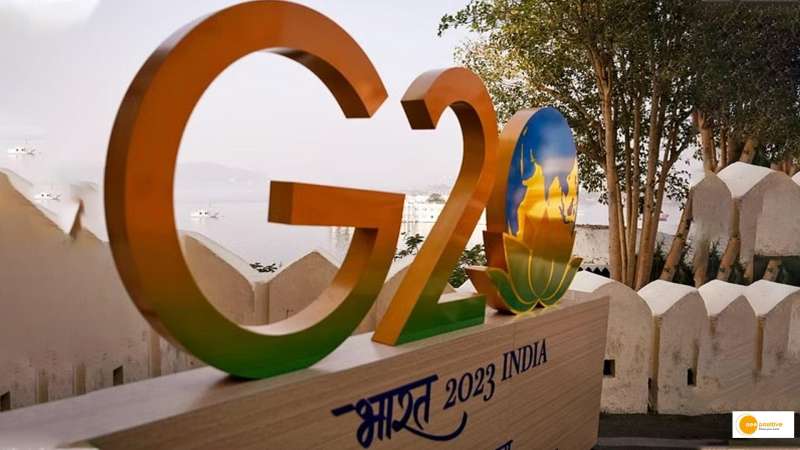

Women-led development has been a key pillar of the current government, and several significant steps toward gender mainstreaming in policy actions across various spheres have been taken. Consequently, India has rightly called for the inclusion of gender concerns into the core agenda of the G20 during its Presidency, with PM Modi noting that ” we have to maintain priority on women-led development even in our G-20 agenda”.
The G20 Presidency provides India with an excellent opportunity to highlight its efforts toward the social advancement of women. However, now is the best time to bring to the forefront some recent measures to economically empower women that have been undertaken in silos and have not received the attention they deserve. These measures, if implemented in accordance with global best practises, have the potential to alter the enabling ecosystem for women-led development.
Specifically, three areas of significant policy actions impacting women need more visibility –
Strengthened gender budgeting– In 2005-06, India adopted gender budgeting as a powerful budgetary strategy to advance gender mainstreaming at the national level in all policies, programmes, laws, and schemes. In 2018, exemplary measures were taken to strengthen the gender budgeting process, with each ministry and department required to establish a gender budget cell with a nodal officer. Each ministry was also required to identify schemes and programmes with a gender component and to submit demands in the Budget Circular – a mechanism for reviewing each ministry’s programmes through a gender lens. Because of these measures, all Ministries, even those in gender-neutral sectors, now have a gender mandate and must view their work through a gender lens.
To increase the impact of the gender budgeting process, upcoming budgets must include outcome targets for gender-budget expenditures as well as an ex-ante and ex-post gender impact analysis of all programmes. Gender initiative annual budget execution reports should also be made available. Furthermore, India should consider implementing Niti Aayog’s proposal to provide legal support for gender-based budgeting across all ministries through the creation of the Gender Budgeting Act.
Mandatory ESG disclosures – Although India has several policy mandated tools to ensure that women are enabled at work, there has been a lack of any effective mechanism for monitoring and assessing workplace progress toward enabling women.
The introduction of mandatory reporting requirements under the environment, social, and governance (ESG) for the top 1,000 listed companies by the Securities and Exchange Board of India (SEBI) in FY 2022-2023 has filled this gap.
Four of the nine RBC Guidelines principles, on which the Business Responsibility and Sustainability Report (BRSR) format for ESG reporting is based, are mapped against SGD 5 on Gender Equality. As a result, India will be able to collect insightful gender-disaggregated statistics in the corporate sector on parameters such as gender diversity on payrolls as well as on Boards and Management Teams; employee turnover rates and return-to-work rates; median wages; maternity leave, paternity leave, and child-care benefits; occupational health, safety and wellbeing; and on training and skill development.
To make ESG an effective tool for gender equality, the government must not only collect this valuable data but also reward and highlight organisations that perform well on these metrics. Companies must be mandated to set specific Diversity, Equity, and Inclusion (DEI) related commitments and targets, and evaluate performance against the specific commitments, to bring in the element of target setting akin to the actions relating to climate change goals.
Gender Mainstreaming in India’s Trade Policy – Recent steps have been taken to create an environment conducive to women’s participation in international trade.
For example, India’s National Trade Facilitation Action Plan (2020-23) specifically recommended promoting “gender inclusiveness in trade” as an action point, and the Land Port Authority of India (LPAI) has announced a target of making all Indian land ports gender friendly within three years.
For the first time, the vision statement of the new foreign trade policy 2023 is expected to include a component on women’s empowerment and gender equality, with room for additional facilitation measures and non-fiscal incentives.
To continue to use trade policies and agreements for reducing gender inequalities, India must now reaffirm its commitment to mainstreaming gender into its Free Trade Agreements (FTAs). Women entrepreneurs must, at the very least, be included as important stakeholders in consultations during bilateral FTA negotiations. To ensure that women are at the forefront of trade and investment discussions, a gender and trade advisory group could be formed.
Finally, it is suggested that India not only showcases and expands its gender mainstreaming initiatives but also invites all G20 countries to share their best practices in order to learn from one another.
Also Read: India G20 Presidency 2023: its idea


